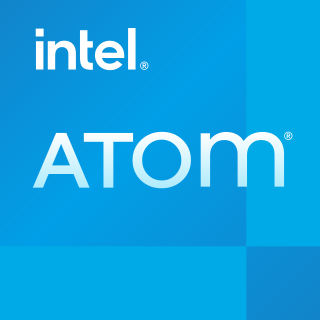Specifications
This section needs additional citations for verification .(December 2019) |
Ion (first-generation Nvidia Ion)


- Chipset: MCP79MX (with integrated GeForce 9400M GPU)
- Intended Operating System: (Ion): Microsoft Windows XP, Vista, Windows 7, Linux; (Ion-LE): Microsoft Windows XP, Linux
- Memory Interface: DDR3-1066 or DDR2-800
- DirectX 10 Support: Yes, No (Ion-LE)
- Graphics Cores: 16
- Core/Shader Clocks: 450/1100 MHz
- Texture Fill Rate: 3.6 Billion/second
- Maximum Anti-Aliasing (AA) Sample Rate: 16x
- RAMDACs: 300 MHz
- Maximum High-Dynamic Range (HDR) Precision: 128-bit
- Maximum Analog Resolution: 2048 × 1536
- Maximum Digital Resolution: 2560 × 1600
- Graphics APIs: DirectX 10.0, OpenGL 3.3
- Full HD decode (1080i/p): Yes, 3rd Generation PureVideo
- Display Options: HDMI, Dual-link DVI, DP, or VGA (any 2)
- HDMI Version: 1.8 (according to the manual of the zotac ION itx-f board)
- PCI-Express 2.0: 20 lanes (1×16 and 4×1)
- SATA Drives: 6
- SATA Speed: 3 Gbit/s
- RAID: 0, 1
- Networking: 10/100/1000 BASE-T
- USB Ports: 12/2C
- PCI Slots: 5
- Audio: HDA (Azalia)
Ion 2 (next-generation Nvidia Ion)
- CUDA cores: up to 16
- Standard Memory configurations: 512 MB of DDR2, 256 MB of DDR3, 512 MB of DDR3
- Memory Interface Width: Up to 64-bit
- Hardware Video Decode Acceleration: Yes, 4th Generation PureVideo
- nVidia CUDA Technology: Yes
- Certified for Windows 7: Yes
- Microsoft DirectX: 10.1
- OpenGL: 3.3
- Audio: HDA
- Maximum digital resolution: 2560 × 1600
- Maximum VGA resolution: 2048 × 1536
- Netbook supported display connectors: HDMI
- Desktop supported display connectors: Dual-link DVI, DisplayPort, HDMI, VGA
- Multi-monitor: Yes
- HDCP: Yes
Motherboards
- ASRock A330ION motherboard (Intel Atom 330 CPU, DDR3, PCI Express x16 slot)
- ASUS AT5IONT-I motherboard (Intel Atom D525 CPU, DDR3, USB3, PCI Express x4 slot @ x1 speed, with latch)
- ASUS AT3N7A-I motherboard (Intel Atom 330 CPU)
- ASUS AT3IONT-I motherboard (Intel Atom 330 CPU, DDR3, PCI Express x16 slot)
- ASUS AT3IONT-I DELUXE motherboard (Intel Atom 330 CPU, DDR3, PCI Express x16 slot, DC power connector, 802.11n WiFi and Bluetooth, Media remote)
- IEI Industrial Motherboard KINO-PVN D5251 ION2, DDR3, HDMI, Dual GbE, SATA, PCI/ PCI Expr.x1 slot, mini-PCI, CF TypeII
- Jetway NC63-230 ITX board (Intel Atom 230 CPU, 20-pin ATX power connector)
- Jetway NC63-330 ITX board (Intel Atom 330 CPU, 20-pin ATX power connector)
- Jetway NC63P-230 ITX board (Intel Atom 230 CPU, 12V DC Power Onboard)
- Jetway NC63P-330 ITX board (Intel Atom 330 CPU, 12V DC Power Onboard)
- Point of View POV/ION230 motherboard (Intel Atom 230 CPU)
- Point of View POV/ION330 motherboard (Intel Atom 330 CPU)
- ZOTAC IONITX A-B motherboard (Intel Atom 330 CPU, 90 W DC power connector, Wireless PCIe module installed)
- ZOTAC IONITX A-U motherboard (Intel Atom 330 CPU, DC power connector, Wireless PCIe module installed)
- ZOTAC IONITX B-E motherboard (Intel Atom 230 CPU, 20-pin power connector)
- ZOTAC IONITX C-U motherboard (Intel Atom 230 CPU, DC power connector)
- ZOTAC IONITX D-E motherboard (Intel Atom 330 CPU, 20-pin power connector, Wireless PCIe module installed)
- ZOTAC IONITX F-E motherboard (Intel Atom 330 CPU, 20-pin power connector, Wireless PCIe module installed, PCI Express x16 slot)
- ZOTAC IONITX G-E motherboard (Intel Atom 330 CPU, 20-pin power connector, PCI Express x1 slot, mini-PCIe x1 slot)
- ZOTAC IONITX N-E motherboard (Intel Celeron 743 CPU, 20-pin power connector, Wireless PCIe module installed, PCI Express x16 slot)
- ZOTAC IONITX P-E motherboard (Intel Celeron SU2300 CPU, 20-pin power connector, Wireless PCIe module installed, PCI Express x16 slot)
Desktop systems

- Acer AspireRevo Nettop Media Server w/Remote
- Aleutia H1 Hotel PC (with the above ZOTAC IONITX A-U), fanless in the single core version. [6]
- aOpen GP7A [7]
- ASRock Ion 330 series [8]
- ASRock Ion 330HT series w/Remote [9]
- ASRock Ion 330Pro
- ASUS Eee Box EB1012U (ION 1)
- ASUS Eee Box EB1012P (ION 2)
- ASUS Eee Box EB1501
- Asus S1-AT5NM10E
- Foxconn NetBox-nT330i [10]
- Giada Mini PC series [11]
- Lenovo IdeaCentre Q150 - 40816AU [12]
- MSi All-in-One PC Wind Top AE2220
- Myka ION
- Orbit Micro Helix A58 Sleek NVIDIA ION/N330 desktop system [13]
- Orbit Micro Helix A5W Fanless IP waterproof dustproof Nvidia ION system [14]
- Sapphire EDGE HD [15]
- Shuttle XS35GT, fanless system with ION2 and Atom D510 [16]
- Viewsonic VOT132 [17]
- ZaReason Ion Breeze [18]
- Zotac Mag [19]
Netbook systems

- Acer Aspire One 532G [20]
- Asus Eee PC VX6 [21]
- Asus Eee PC 1015PN [22]
- Asus Eee PC 1201N [23]
- Asus Eee PC 1201NL [24] (Only graphics component attached to Intel motherboard.
- Asus Eee PC 1215N [25]
- HP Mini 311 [26]
- Lenovo IdeaPad S12 [27]
- Point of View Mobii ION [28]
- Samsung N510 [29]












